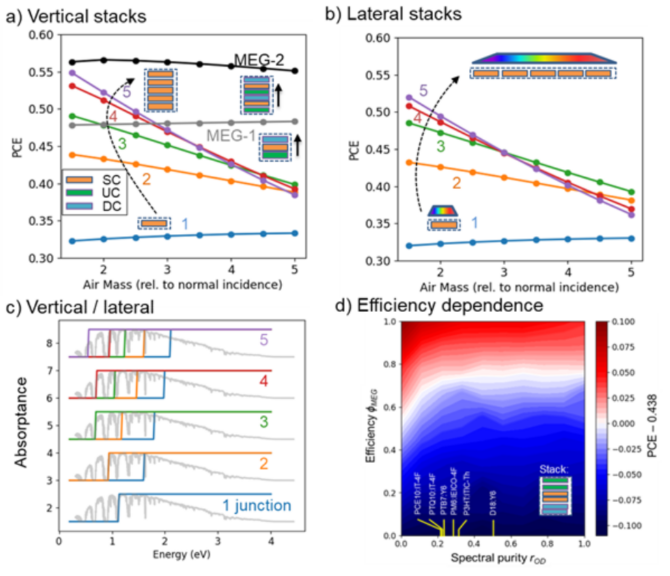Lüer, L., Peters, M., Le Corre, V. M., Forberich, K., Guldi, D., Brabec, C. J. – Advanced Materials, 2308578, 2023
Multijunction devices and photon up- and down conversion are prominent concepts aimed at increasing photovoltaic efficiencies beyond the single junction limit. Integrating these concepts into advanced architectures may address long-standing issues such as processing complexity, microstructure control and resilience against spectral changes of the incoming radiation. However, so far, no models have been established to predict the performance of such integrated architectures. Here, we present a simulation environment based on Bayesian Optimization that can predict and virtually optimize the electrical performance of multi-junction architectures, both vertical and lateral, in combination with up- and down conversion materials. Microstructure effects on performance are explicitly considered using machine learned predictive models from high throughput experimentation on simpler architectures. We identify two architectures that would surpass the single junction limit of photovoltaic energy conversion at reasonable complexity: a vertical “staggered half octave system”, where selective absorption allows the use of 6 different bandgaps, and the lateral “overlapping rainbow system” where selective irradiation allows the use of a narrowband energy acceptor with reduced voltage losses, according to the energy gap law. Both architectures would be highly resilient against spectral changes, in contrast with two terminal multi-junction architectures which are limited by Kirchhoff’s law.

Lüer, L., Peters, M., Le Corre, V. M., Forberich, K., Guldi, D., Brabec, C. J. – Advanced Materials, 2308578, 2023
Multijunction devices and photon up- and down conversion are prominent concepts aimed at increasing photovoltaic efficiencies beyond the single junction limit. Integrating these concepts into advanced architectures may address long-standing issues such as processing complexity, microstructure control and resilience against spectral changes of the incoming radiation. However, so far, no models have been established to predict the performance of such integrated architectures. Here, we present a simulation environment based on Bayesian Optimization that can predict and virtually optimize the electrical performance of multi-junction architectures, both vertical and lateral, in combination with up- and down conversion materials. Microstructure effects on performance are explicitly considered using machine learned predictive models from high throughput experimentation on simpler architectures. We identify two architectures that would surpass the single junction limit of photovoltaic energy conversion at reasonable complexity: a vertical “staggered half octave system”, where selective absorption allows the use of 6 different bandgaps, and the lateral “overlapping rainbow system” where selective irradiation allows the use of a narrowband energy acceptor with reduced voltage losses, according to the energy gap law. Both architectures would be highly resilient against spectral changes, in contrast with two terminal multi-junction architectures which are limited by Kirchhoff’s law.